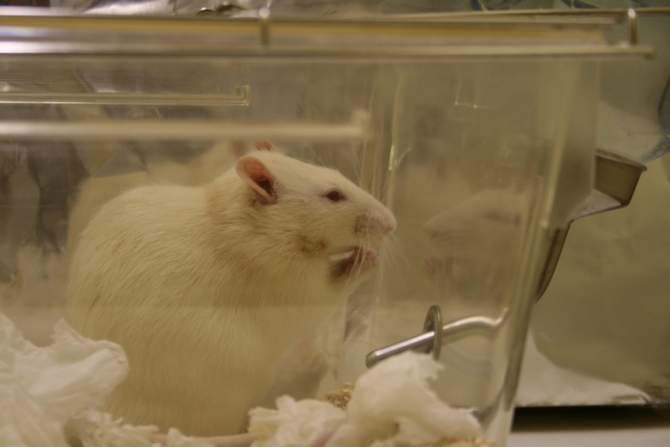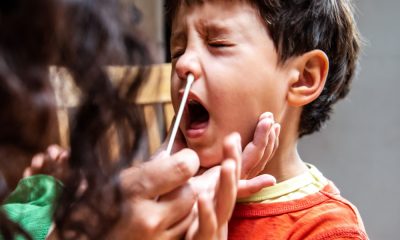Human physiological uniqueness made possible our colonisation of the world. Since our ancestors emerged from the African savanna tens of thousands of years ago, we’ve migrated and established residence in more or less every region on the planet, regardless of how hot or cold in temperature or high or low in altitude.
This tendency towards dispersal and exploration led some people to think of hominins — humans and our nearest extinct cousins such as the Neanderthals — as the colonising ape. Our unusual biological and behavioural adaptability — sometimes called plasticity — allows us to adjust to a variety of inhospitable environments.
An analogous story appears to be true of SARS-CoV-2 (the virus that causes COVID), which is now found just about wherever people are. And it’s arguably the same quality — plasticity — that’s enabled this rapid spread and evolutionary success of both humans and disease. We are descendants of the early colonising ape; the variants infecting us are descendants of the colonising virus. And one implication of this line of descent is that variants evolving in other animals are unlikely to pose much of a threat to us.
To understand why, think about how humans have, over the past millennia, adapted to hostile environments. Although we’re just one species — Homo sapiens — there’s tremendous variation in our appearance and to a lesser extent our genetic makeup. Naturalists of the 19th century noticed, for example, that average body size in warm-blooded species tends to increase as average temperature decreases. Modern-day researchers have confirmed that this rule — known as Bergmann’s rule — applies to some populations of humans.
Other changes are found in people that have lived in high-altitude regions — such as some areas of Tibet — long enough for nature to select traits that promoted survival in this environment. In these regions, the air is dense and consequently there is less oxygen available. And, unlike in low-temperature environments, people can’t just put on thicker layers to better survive: biological changes are necessary. These changes include improved oxygen delivery to the bloodstream and metabolism — and recently researchers have found specific genes that may explain these physiological changes.
Over time, then, it’s clear that humans, like all species, adapted to their surroundings. Unlike other species, however, we didn’t become different species to do so, and our plasticity helps to explain why. According to the evidence, we are generalists. Because of our capacity for learning and our unusual physiologies, we can adapt to most environments on Earth. By contrast, most species are specialists. They are adapted entirely to their specific ecological circumstances. Artificially moving any would probably lead to their extinction.
Generalist virus
Analogously, since it began transmitting among people, new SARS-CoV-2 variants appeared that helped the virus to infect humans more effectively. In its earliest detected state, the novel coronavirus infected different animals. We’ve known since mid-2020, for example, that cats and dogs are susceptible to infection, as are bats, which — directly or indirectly — people blame for the virus’s ability to infect humans. Yet it’s possible that what we’ve been dealing with all along is a virus that, because of its unusual evolutionary lineage, was, like us, a generalist.
The conditions of the Wuhan live animal and seafood markets in 2019 may have given SARS-CoV-2 the breeding ground to develop this strategy. Millions of creatures living in enclosed spaces on top of one another provide the perfect conditions for a virus — which overall evolve at astonishingly fast rates — to adapt to these hosts, without ever needing to develop strategies specific to any single one.
The variants we’ve consequently seen emerge among humans — alpha, beta, delta and now omicron — are the same evolutionary steps we’d expect from a novel organism adapting to a new host environment. Regardless of their other qualities, these variants are each more infectious and transmissible than the last. The virus is specialising to us, much as humans have specialised to the many environments we inhabit.
In 2020, a SARS-CoV-2 variant emerged in mink, which marked a step towards specialisation in that species. However, it didn’t pose much of a public health threat to humans. More recently, there has been evidence of zoonosis from Ontario deer – and there are likely to be many more such examples in the future – but these variants are unlikely to outcompete better human-adapted variants such as omicron. Much as people that evolved to live in particular environments, or to have a particular kind of diet, face health threats when their living circumstances drastically change, SARS-CoV-2 variants that evolve in other species won’t be specialised to us.
Omicron, and whatever the next variants are that signify increased specialisation to humans, are likely to be better adapted, and thus fitter when circulating among us. Claims about the threats of animal reservoirs are, therefore, probably unfounded. But we should, of course, continue to be vigilant.
As we enter the third year of the pandemic, it’s critical, perhaps more than ever, that we use the intelligence with which evolution has graced us — and which has been, and continues to be, essential to our survival — to outmanoeuvre the public health threats we face. More and better-specialised variants of SARS-CoV-2 will continue to emerge. And it’s towards these — and novel viral threats that stem from dangerous agricultural practices — that we should look.
Jonathan R Goodman, PhD Candidate, Human Evolutionary Studies, University of Cambridge
This article is republished from The Conversation under a Creative Commons license. Read the original article.
















